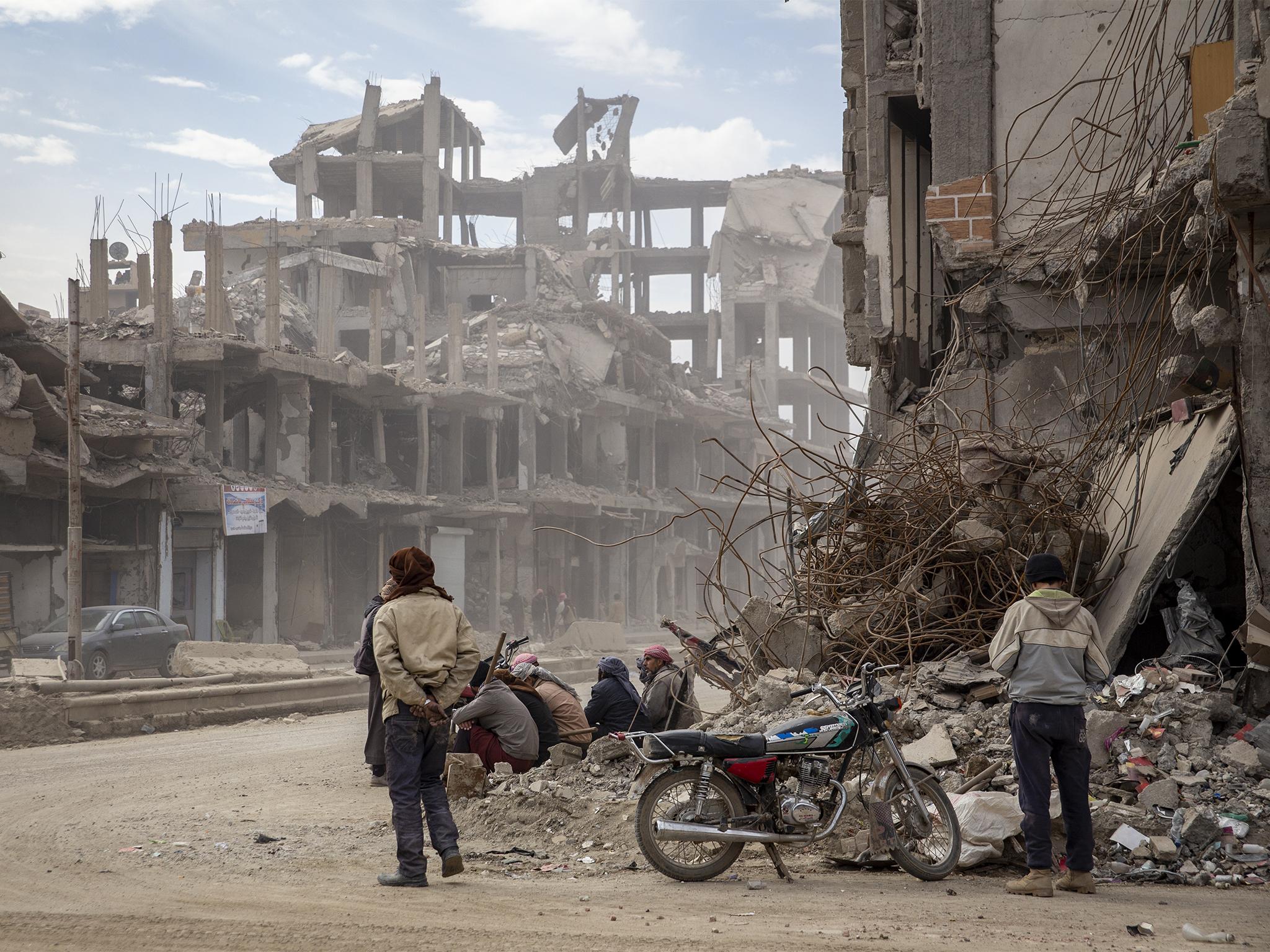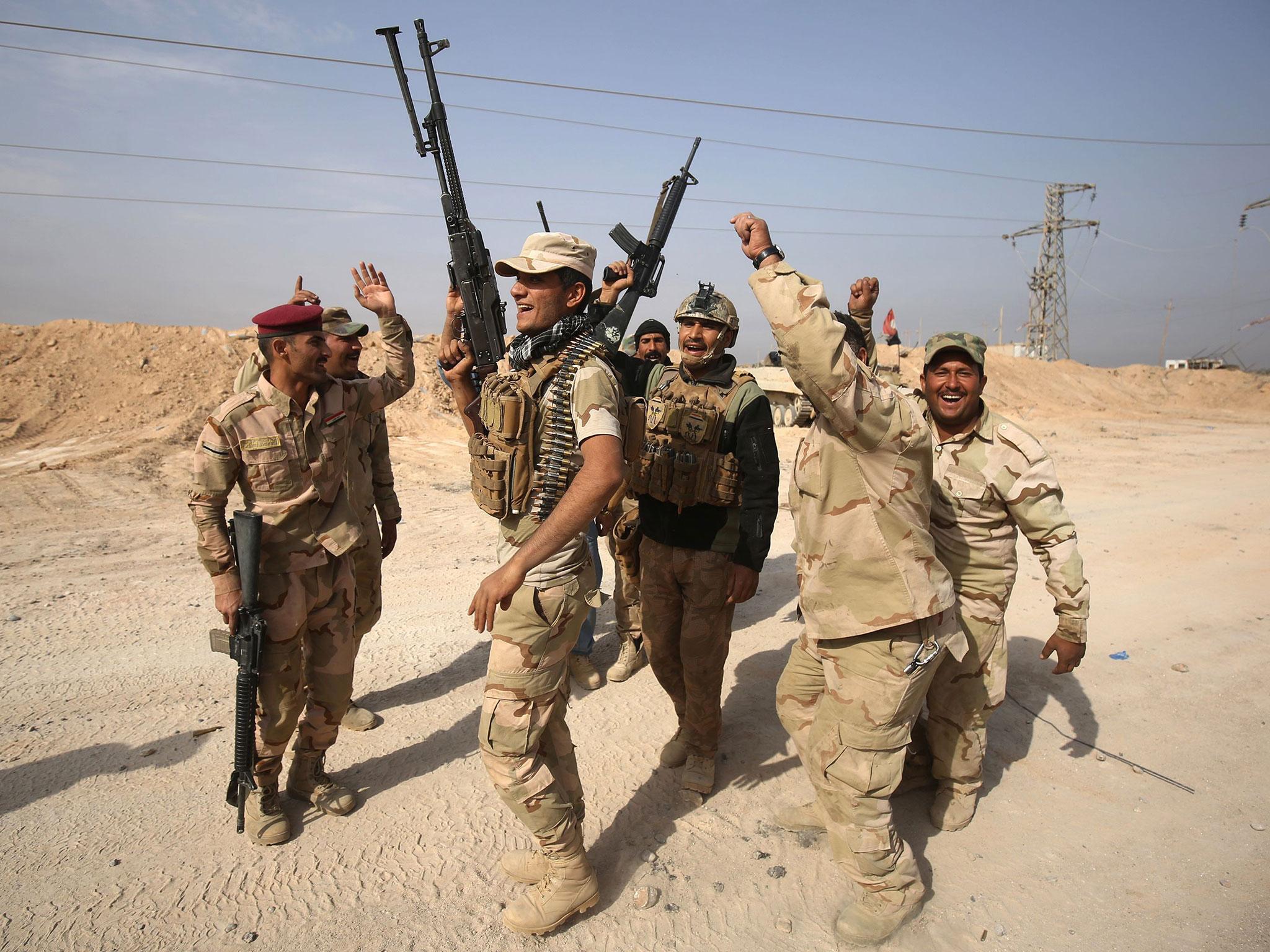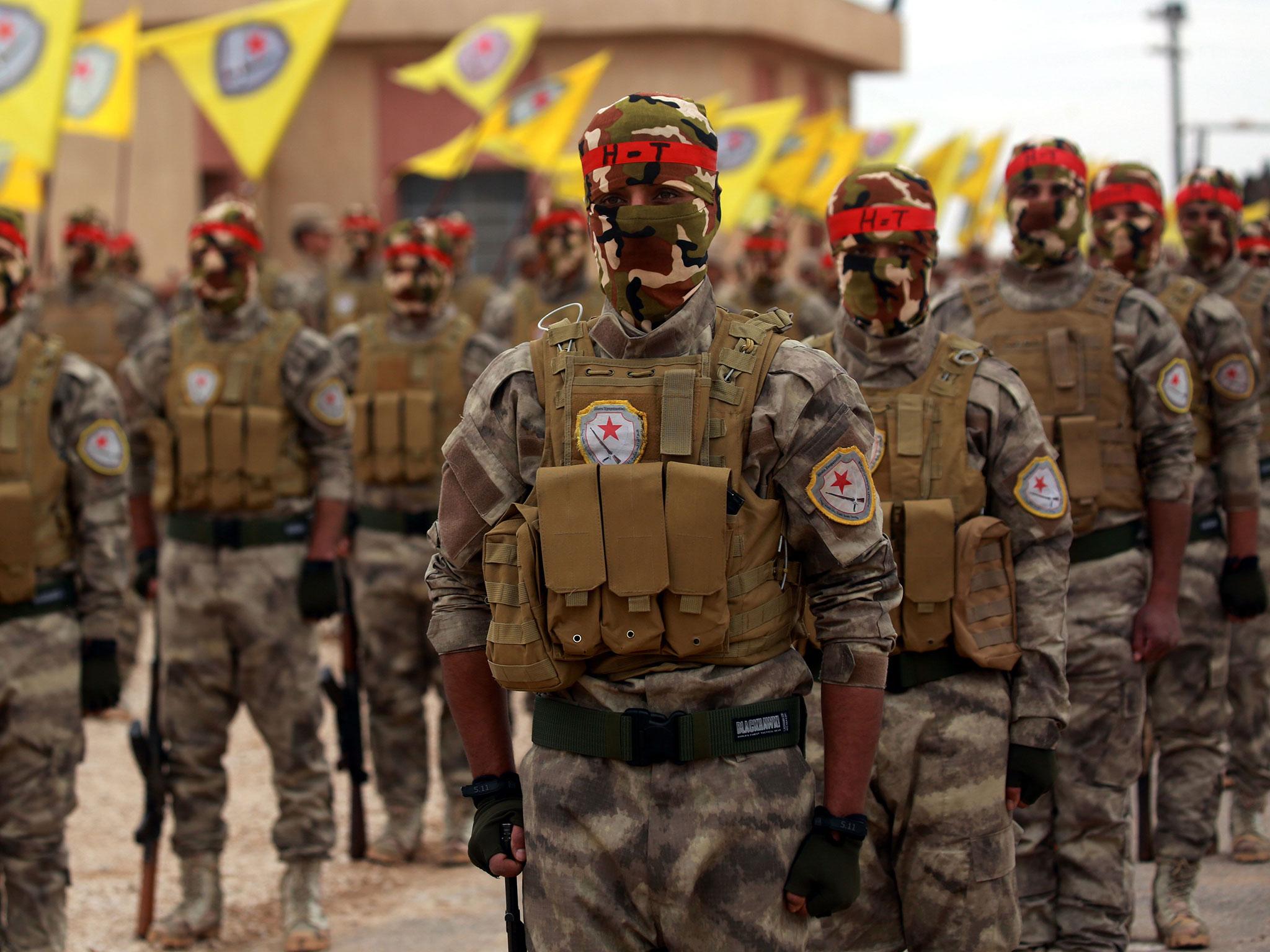Amid a fractured political and military landscape, Isis are quietly regrouping in Syria
'So many of them got away, with their cars, their weapons: now Daesh are here again. Conditions have changed and they are using this, doing well and increasing power'

Your support helps us to tell the story
From reproductive rights to climate change to Big Tech, The Independent is on the ground when the story is developing. Whether it's investigating the financials of Elon Musk's pro-Trump PAC or producing our latest documentary, 'The A Word', which shines a light on the American women fighting for reproductive rights, we know how important it is to parse out the facts from the messaging.
At such a critical moment in US history, we need reporters on the ground. Your donation allows us to keep sending journalists to speak to both sides of the story.
The Independent is trusted by Americans across the entire political spectrum. And unlike many other quality news outlets, we choose not to lock Americans out of our reporting and analysis with paywalls. We believe quality journalism should be available to everyone, paid for by those who can afford it.
Your support makes all the difference.Attacks in Raqqa, the former capital of the Caliphate, in a series across an expanding area, and claiming a lethal toll, including the lives of Russian soldiers; the capture and executions of rival militia fighters; the seizure of territory with new bases being set up. Isis is emerging from the shadows and back onto the battlefields of Syria.
The return of the jihadists, once supposedly comprehensively defeated, is taking place amid rapidly changing dynamics.
The Independent has spoken to Syrian and Kurdish militias, and Western and Turkish officials who have provided a complex canvas of manoeuvrings by groups on both sides of the conflict: shifting alliances and betrayals which have helped the resurgence of the most bloodthirsty of Islamist terrorist groups.
There are believed to be between 8,000 to 10,000 Isis fighters remaining in Syria and Iraq. To put it into context, this is about 10 times the numbers it had left in Iraq – then under the name of Islamic State of Iraq – when US forces withdrew in 2011.
Within three years, however, rebranded, these Islamist fighters had captured swathes of territory in Syria and had almost reached the gates of Baghdad.
Hudhayfah al-Badri, one of the sons of the Isis leader Abu Abu Bakr al-Baghdadi was killed recently during an attack against Russian and Syrian forces in Homs. But Baghdadi remains at large, despite repeated attempts by both the Americans and the Russians to kill him. The latest, unconfirmed, reports place him at Qaim, in Iraq. His ‘emirs’, commanders, are now reportedly deploying to areas from where they had fled during the coalition's aerial campaign.
“We kept on being told by the Western countries how Daesh (Isis) has been beaten, finished, that it was all over,” said Sami Abdullah Abdo, a rebel fighter who had fought against Isis with a number of rebel battalions, including Ahrar al-Sham.
“But we who are on the ground could see that was not the case. So many of them got away, with their cars, their weapons: now Daesh are here again. Conditions have changed and they are using this, doing well and increasing power.”
Donald Trump has ordered US disengagement in Syria with funding cut to military and civil projects.
Kurdish forces that Washington used to fight Isis are now battling the Turkish military. And there is growing disenchantment among local people about taxes levied, and forced conscriptions by some of the West’s allies which had taken over the territories of Isis.
At the same time the SDF (Syrian Democratic Forces), a mixed Kurdish and Arab unit favoured by the US military, has been accused of failing to act against an enclave of Isis foreign fighters because, it is claimed, they hold that doing so would only hasten disengagement by their international sponsors.
There has been greater presence of French commandos in Syria, partly to replace departing Americans, but much of their time has been spent trying to stop internecine strife between rebel battalions.
The competition for influence is likely to increase further with the prospect of lucrative funding arriving from Saudi Arabia and the United Arab Emirates in reconstruction projects.
There are also divisions and disputes among Bashar al-Assad’s international allies and local militias. The Iranians are withdrawing some of their forces under Russian pressure. Moscow also wants the disbanding of most of the regime’s paramilitary groups, including ones like the armed wing of Al-Bustan Association, set up by the president’s powerful cousin, Rami Makhlouf.
The paramilitaries are said to be resisting the changes as, it is believed, are various branches of the intelligence service who have been asked by the Russians to scale down the sweeping arrests which had caused deep resentment among people and helped fuel the opposition.

The Russians, meanwhile, have suffered losses inflicted by a rejuvenated Isis. At least four died and five others were injured during an assault on the town of Mayadeen, in the oil-rich Deir Ezzor region in the south-east last month.
More than 40 jihadists are believed to have also died in the encounter. A Western security official pointed out: “Daesh used a large number of all terrain vehicles which they have acquired, and they put up a firefight lasting more than an hour. The fact that they are prepared to sustain those kind of losses in one operation indicates they are not short of manpower.”
In the last few weeks, Isis has executed half a dozen members of another rebel group, HTS (Hay'at Tahrir Al-Sham) near Salquin in the north and killed others with IEDs (improvised explosive devices).
There had been a spate of Isis attacks in the Shamiyah Badiyah area, west of the Euphrates, and an increasing presence of their fighters in the Yarmouk Basin and Deir Ezzor.
The breakdown of an agreement between HTS and Isis has led to the upsurge of violence. HTS claims it discovered Isis ‘sleeper cells’ plotting IED strikes and killed around 50 of them. Isis responded with the shooting dead of the HTS fighters it was holding.
One reason for what happened, say Syrian fighters, is that Abu Mohammed Al-Jolani, the HTS leader, is trying to show that he is taking on Isis, to try to get funds from Gulf states and also get his group taken off the US State Department’s list of prescribed terrorist organisations.
Daesh is secretly back in Raqqa, and they are dangerous. There are some people who say life was better under them. I think that is a stupid thing to say, but the fact is that a lot of people are unhappy
Isis is busy finding new allies.
A group of their fighters, including some from Scandinavia, recently escaped captivity and found refuge with the JKW (Jaysh Ibn Khalid al-Walid). The same group, it is claimed, is training over 100 Isis fighters for combat in new rural terrains it is entering.
But it is the reappearance of Isis in Raqqa, the ‘capital’ whose fall was held up as evidence of its demise, which is a reminder – a highly symbolic one for the jihadists – that they have not gone away.
Around 20 SDF fighters have been killed in four separate attacks in Raqqa city and the nearby villages of Hamam al-Turkman and Al-Russafah in the last month.
Some of these killings have been carried out by ‘sleeper cells’ which had infiltrated into the city over months.

Essam left Raqqa six weeks ago for the Turkish border. He had escaped when Isis took control and only went back after the city was retaken.
“But I had to leave again because things were getting bad. The SDF are forcing people to join them, they say it’s our duty, but it is just use of force and I do not want to join”, said the former engineering student, who did not want his surname published because he was worried about his family still in the city.
“There is also a lot of anger about taxes, people having to pay bribes to officials. There is violence between SDF and local volunteers (Thuwar al-Raqqa Brigade).
“Daesh is secretly back in Raqqa, and they are dangerous. There are some people who say life was better under them. I think that is a stupid thing to say, but the fact is that a lot of people are unhappy.”
There are signs of a sustained campaign being planned by Isis in the Al-Bukamal and Badiyah areas where there have been clashes with Iranian-backed militias.
The Iranians and the Damascus regime accuse US-backed rebels of allowing Isis passage to the areas to target the militias.
The changes in the Trump administration have seen the rise of senior figures, including the President’s national security advisor, John Bolton, who have resuscitated plans, ditched by his predecessor, General HR McMaster, for a covert war against Tehran in Syria.
But there are also allegations of Damascus turning a blind eye or even facilitating Isis attacks. Major General Felix Gadney, the British deputy commander of international forces in Syria and Iraq stated: “We remain concerned that the Syrian regime is either unwilling and unable to deal with the threat. From our point of view, it seems to us that Isis are moving through regime areas with impunity.”
According to Syrian activists, regime and Isis commanders met in Al-Hisn, northeast of Sweida on 17 June.
A few hours later, it is claimed, up to 100 Isis fighters made the move to Yarmouk Basin while regime forces went forward, capturing ground.
Amid the accusations and counter accusations it is claimed that the SDF is holding off an assault in the Hajin area where a group of foreign Isis fighters, including some from the West, have been located.
The mission has been postponed several times because, according to several Syrian sources, doing so would simply be helping to outlive SDF’s usefulness in the eyes of the international coalition.
“We know that the Americans and the Europeans’ only real concern left here are foreign fighters, maybe not the military, but that is what we think their governments feel,” said Abu Murtada, a former SDF member.
“So why give them an excuse to cut their help further by clearing out all these foreigners who came to fight for Daesh? That we believe are the views of some in the leadership. There are other factors – the coalition wants to go after foreigners – but there are other priorities for us.”
We know that the Americans and the Europeans’ only real concern left here are foreign fighters
There have been attempts to protect vested interests on the other side as well, with the regime supporting militias said to be pushing back against the Kremlin’s restructuring plans.
A recent report by RIAC (Russian International Affairs Council) whose ‘presidium’ includes Dmitry Peskov, press secretary to Vladimir Putin, said: “Various paramilitary structures – mafia-like clans, private military companies, regional and tribal militias, and militarised political organisations – have undermined the stability of the regime.
“From the very beginning they have attempted to take root in government institutions and, or, take control of various sources of income. It’s no secret that Shabiha [militia] detachments operating under the aegis of National Defence Force control the checkpoints, which in practice means they have access to corrupt schemes.”
The Syrian Hezbollah, funded by the Lebanese Hezbollah and the Iranians, is refusing, it is claimed, to hand back their checkpoints in Al-Muhajairin in Damascus, something the Russians have requested.
The National Defence Force has sent a petition to Assad, asking to be allowed to keep their checkpoints, and the feared Air Intelligence section is also said to have objected to Russian calls to leave their checkpoints.
Noura al-Jizawi, an activist who was jailed by the Assad regime and who later served as vice-president of the exiled opposition umbrella group, the Syrian National Council, spoke of how a fractured political and military landscape has helped Isis.
“Daesh was not destroyed despite what some people claimed, and they are now taking advantage of what is going on.
“They have been good at manipulating the situation on both sides, exploiting grievances among people on the opposition side and also doing deals with the regime,” said Ms al-Jizawi.
“One thing we know is that Daesh, in whatever form, had shown a lot of patience to achieve their aim. The Western countries have not, perhaps, shown enough patience in the past or have taken a sufficiently longterm view. What is really needed now to push for a real political solution and confront Daesh before they get more powerful and destructive.”
Subscribe to Independent Premium to bookmark this article
Want to bookmark your favourite articles and stories to read or reference later? Start your Independent Premium subscription today.
Join our commenting forum
Join thought-provoking conversations, follow other Independent readers and see their replies
Comments